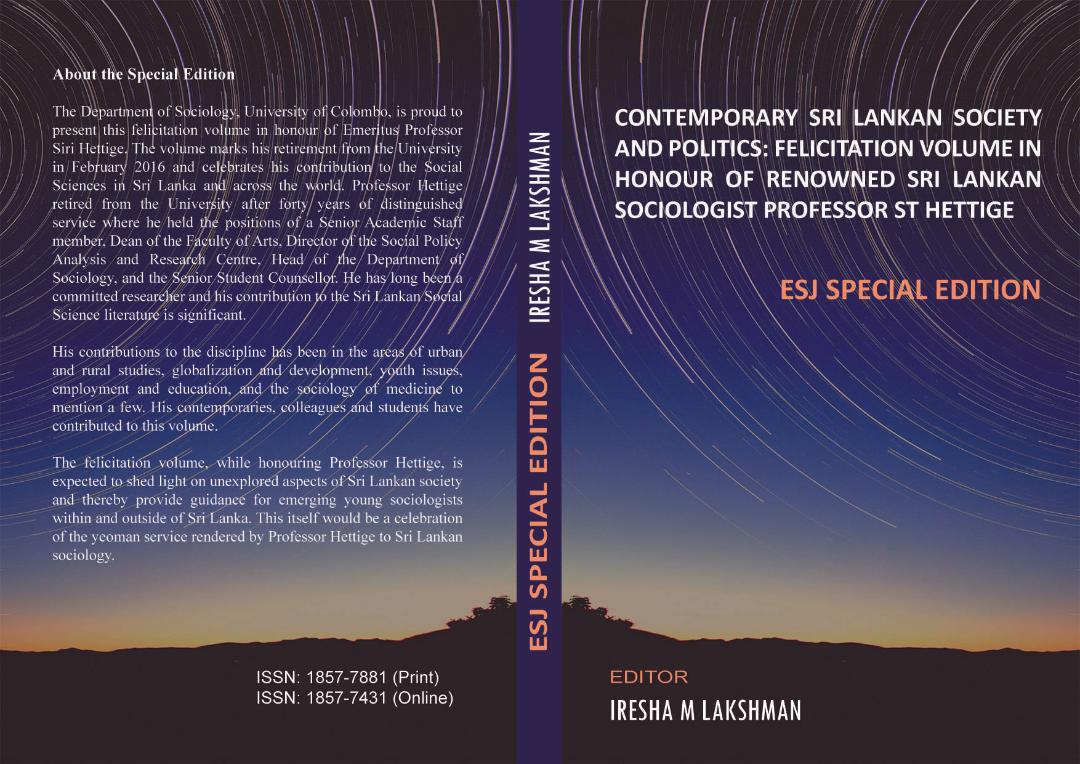Constructing gama or ūr amidst inescapable ethno-national politics: Everyday experience of Pānama people living on the Eastern coast of Sri Lanka
Abstract
Despite the undertakings of the colonial administration which took into consideration the caste system in their census and gradually gave much prominence to creating ethno-religious categories through scientific enumerations and linked them with the political administration of the country and shaped by the majoritarian democratic model, the caste too survived in Sri Lanka. The formation and mobilisation of ethnoreligious political categories contributed towards creating an ethno-religious nationalism and multi-ethnic people engaged in a competition to obtain a better share of the post-independence state. This power competition eventually created victorious as well as defeated feelings within the communities, which were eventually translated to ethno-national tensions and conflicts in Sri Lanka. Against this backdrop research was conducted in the Eastern coastal area in general, and Pānama in particular, suggested that people of rivalry ethnonational groups had developed traditional long-term connections and disconnections through caste lines which ultimately created a “community” identified as gama in (Sinhala) or ūr (Tamil), with a social equilibrium. The ethnographic data collected in this village from 2010-2012 suggests that the people with Sinhala and Tamil ethnic origins (as discussed in today’s context) were linked (and delinked) in relation to religious, cultural, economic, social, and political norms. This aspect was ultimately instrumental in constructing one whole village or a system in which all can live. The village possessed several caste groups; namely, Goigama, Vellālar, Baber, Dhobi (washerman), and Padu. The Goigama and Vellālar caste were accepted as the castes commanding the highest status, while Barbers came in the second place followed by washermen in third and Padu taking the final place in the social structure of the village. The Goigama caste is part of the Sinhala social system, while Vellālar belongs to the Tamil social system. Similarly, both the Barbers and Washermen represented Tamil social system, while the Padu group represents the Sinhala social system. To describe further, both the Sinhala and Tamil social systems had combined and created a hybrid unique system which included members from both the Sinhala and Tamil ethno-national groups, to construct a home or the village.
Downloads
Metrics
PlumX Statistics
Copyright (c) 2020 Anton Piyarathne

This work is licensed under a Creative Commons Attribution-NonCommercial-NoDerivatives 4.0 International License.








